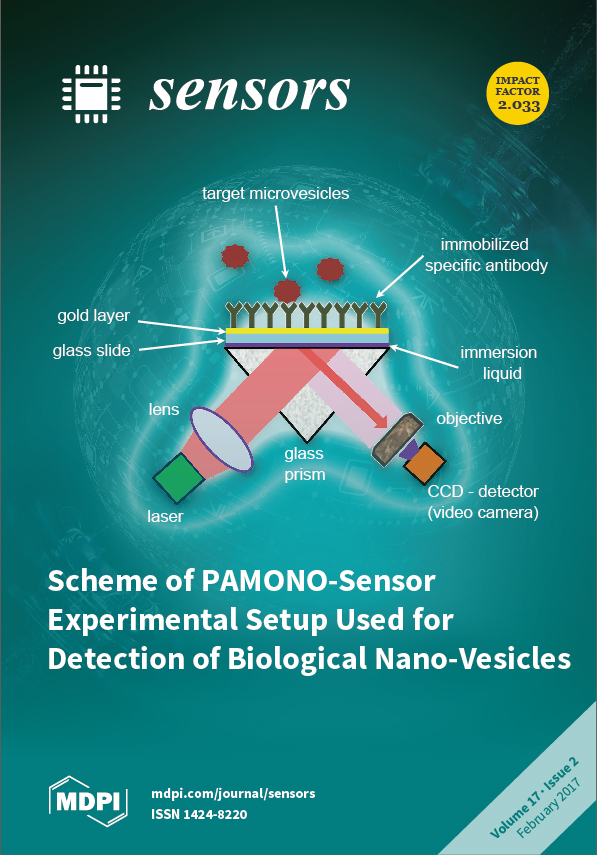In this paper, we demonstrate a miniature magnetic-force-based, three-axis, AC magnetic sensor with piezoelectric/vibrational energy-harvesting functions. For magnetic sensing, the sensor employs a magnetic–mechanical–piezoelectric configuration (which uses magnetic force and torque, a compact, single, mechanical mechanism, and the piezoelectric effect) to convert
x
[...] Read more.
In this paper, we demonstrate a miniature magnetic-force-based, three-axis, AC magnetic sensor with piezoelectric/vibrational energy-harvesting functions. For magnetic sensing, the sensor employs a magnetic–mechanical–piezoelectric configuration (which uses magnetic force and torque, a compact, single, mechanical mechanism, and the piezoelectric effect) to convert
x-axis and
y-axis in-plane and
z-axis magnetic fields into piezoelectric voltage outputs. Under the
x-axis magnetic field (sine-wave, 100 Hz, 0.2–3.2 gauss) and the
z-axis magnetic field (sine-wave, 142 Hz, 0.2–3.2 gauss), the voltage output with the sensitivity of the sensor are 1.13–26.15 mV with 8.79 mV/gauss and 1.31–8.92 mV with 2.63 mV/gauss, respectively. In addition, through this configuration, the sensor can harness ambient vibrational energy, i.e., possessing piezoelectric/vibrational energy-harvesting functions. Under
x-axis vibration (sine-wave, 100 Hz, 3.5 g) and
z-axis vibration (sine-wave, 142 Hz, 3.8 g), the root-mean-square voltage output with power output of the sensor is 439 mV with 0.333 μW and 138 mV with 0.051 μW, respectively. These results show that the sensor, using this configuration, successfully achieves three-axis magnetic field sensing and three-axis vibration energy-harvesting. Due to these features, the three-axis AC magnetic sensor could be an important design reference in order to develop future three-axis AC magnetic sensors, which possess energy-harvesting functions, for practical industrial applications, such as intelligent vehicle/traffic monitoring, processes monitoring, security systems, and so on.
Full article






